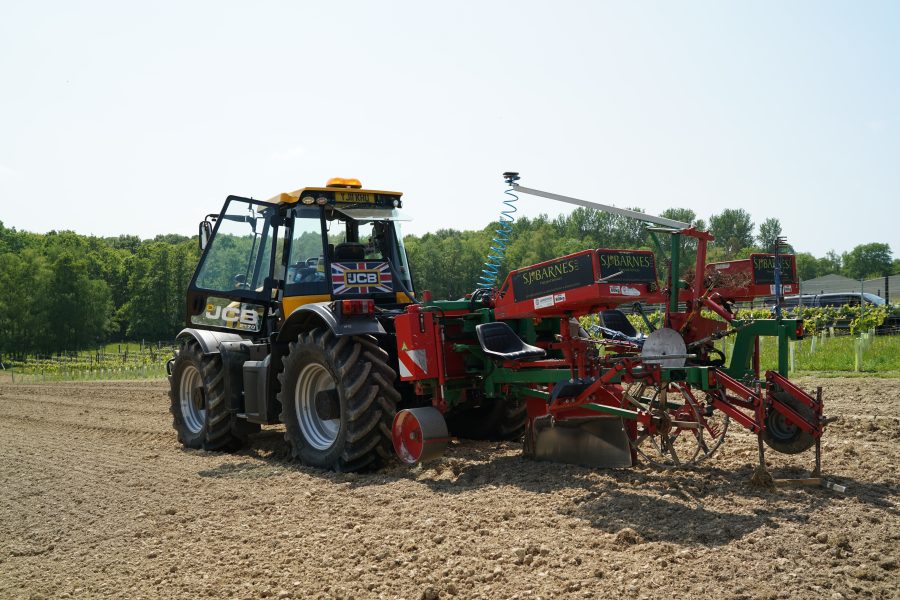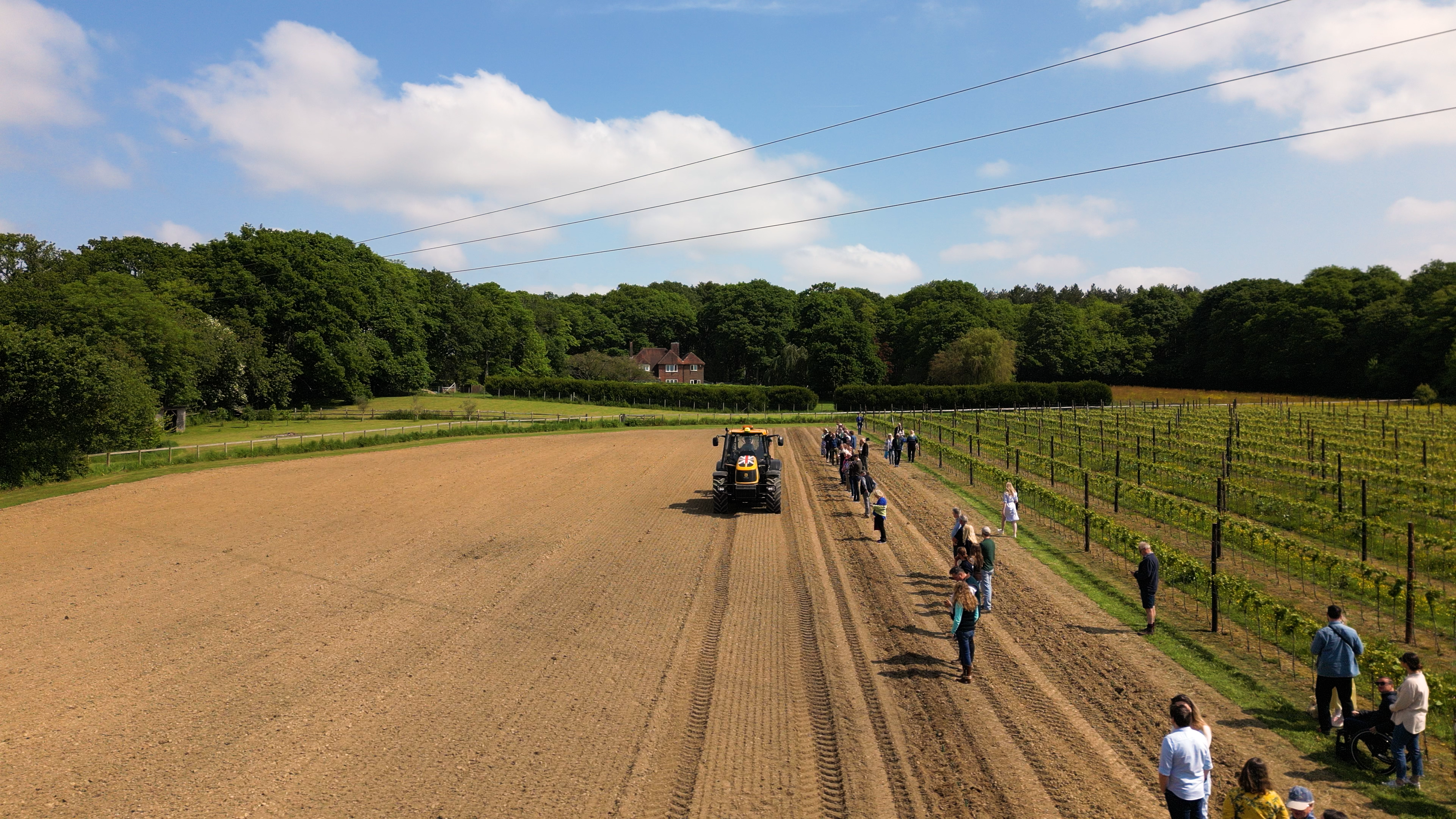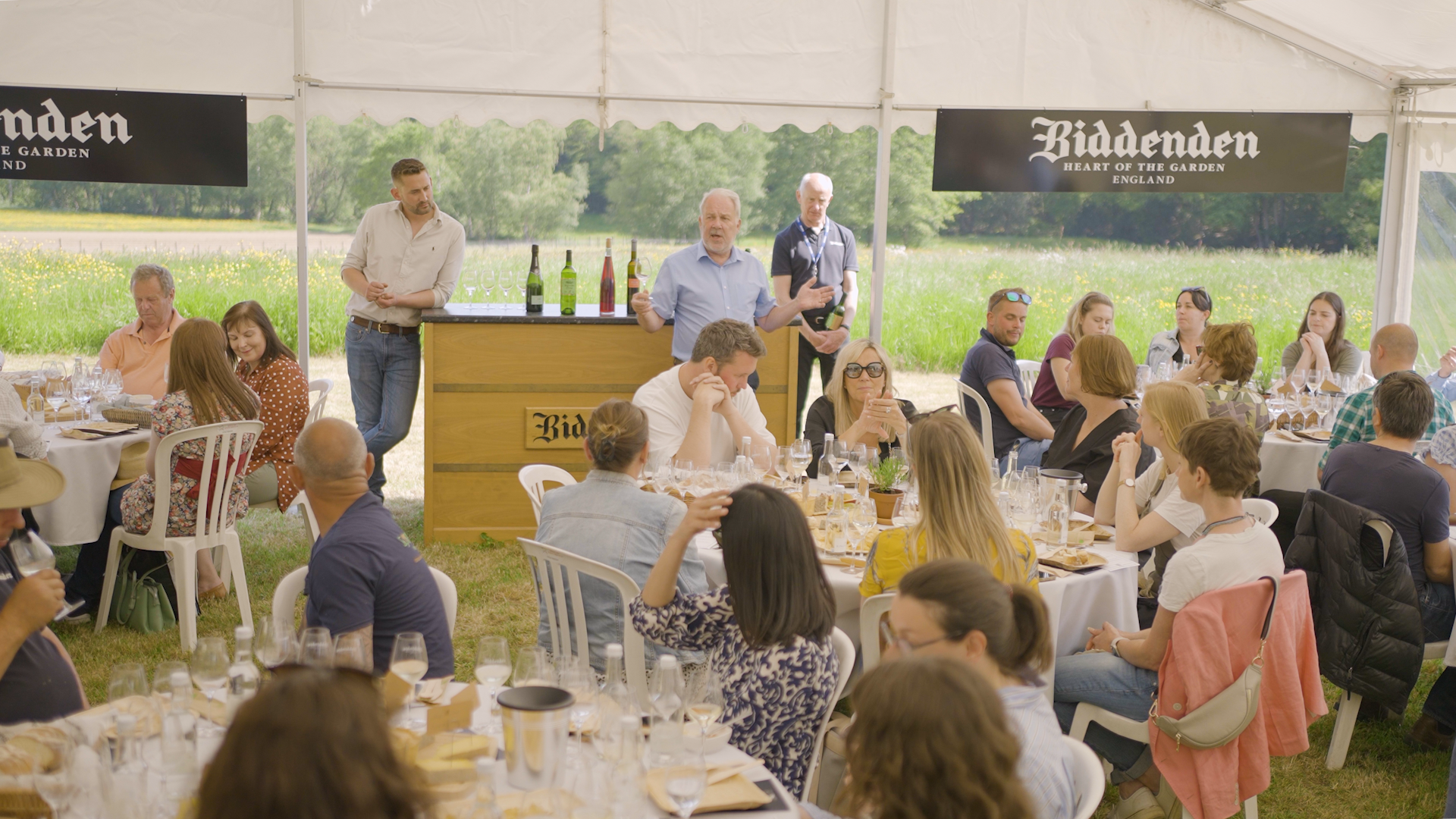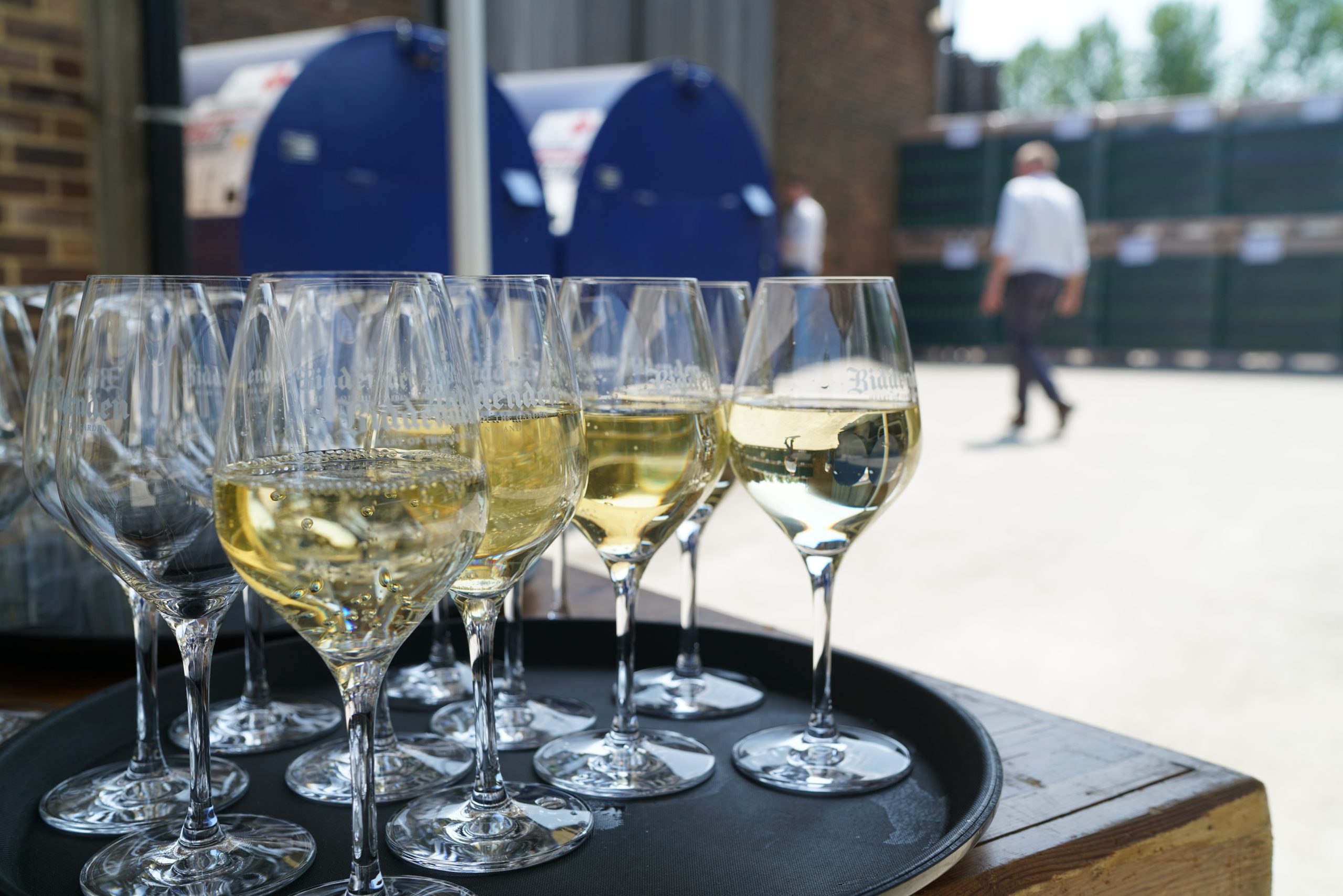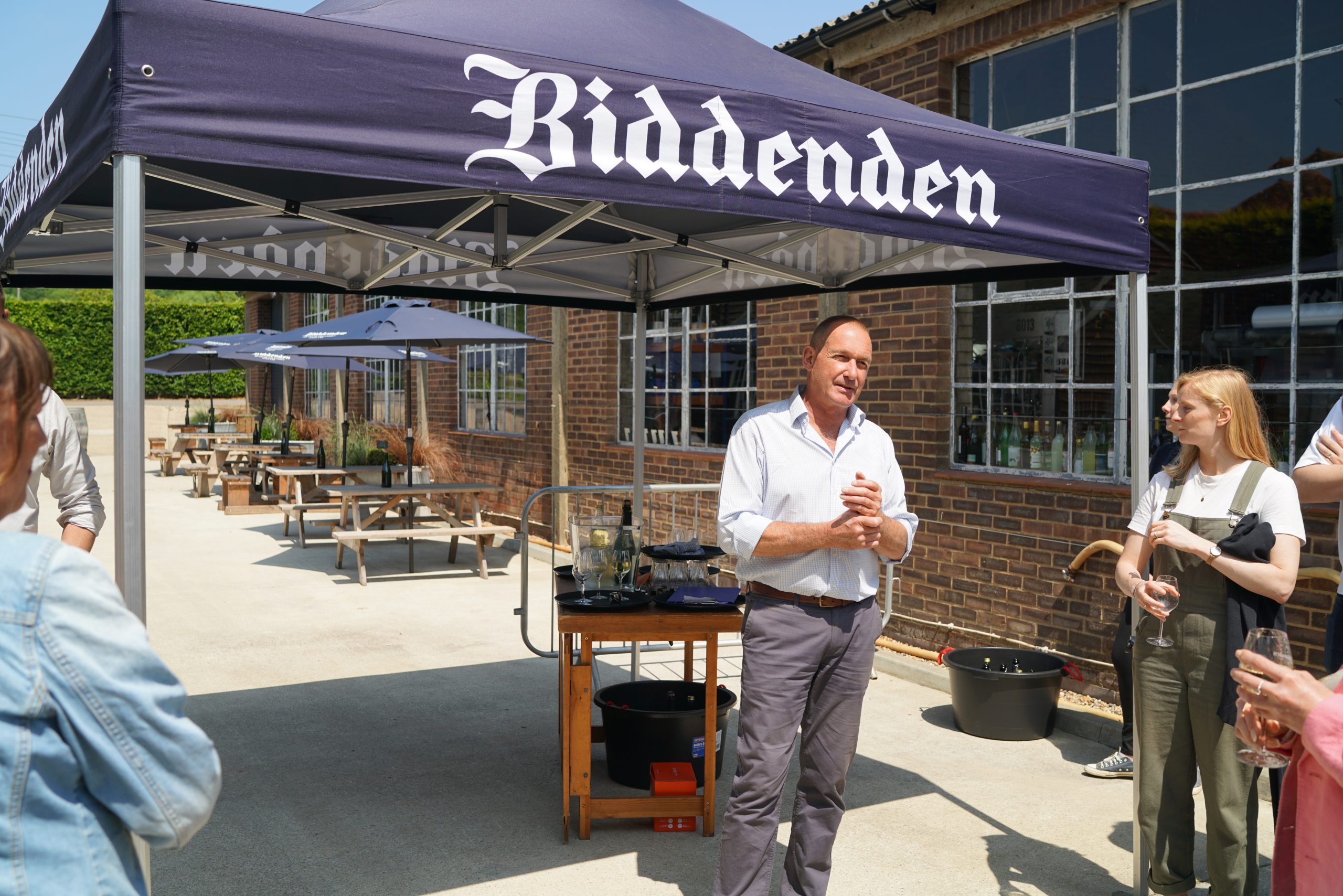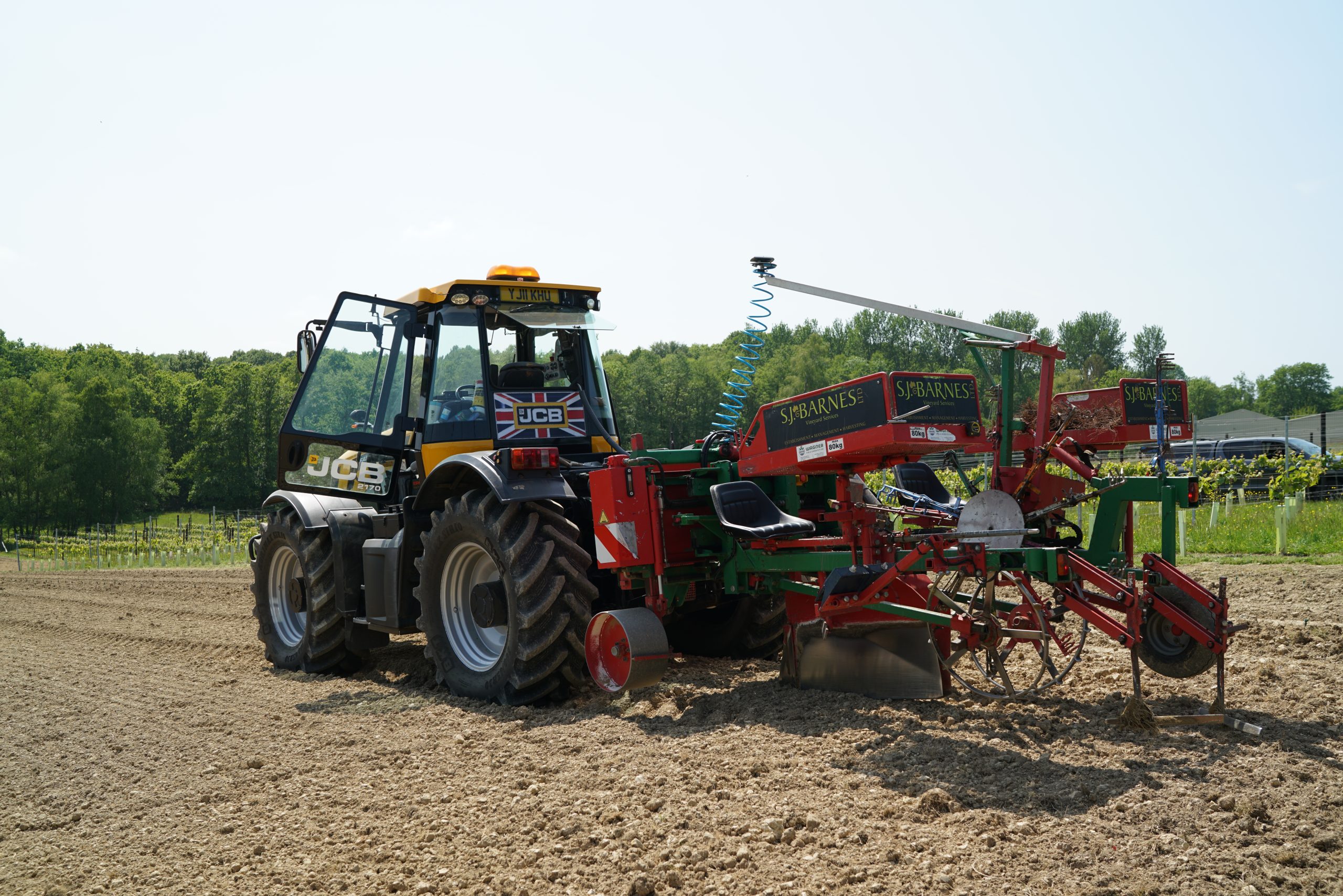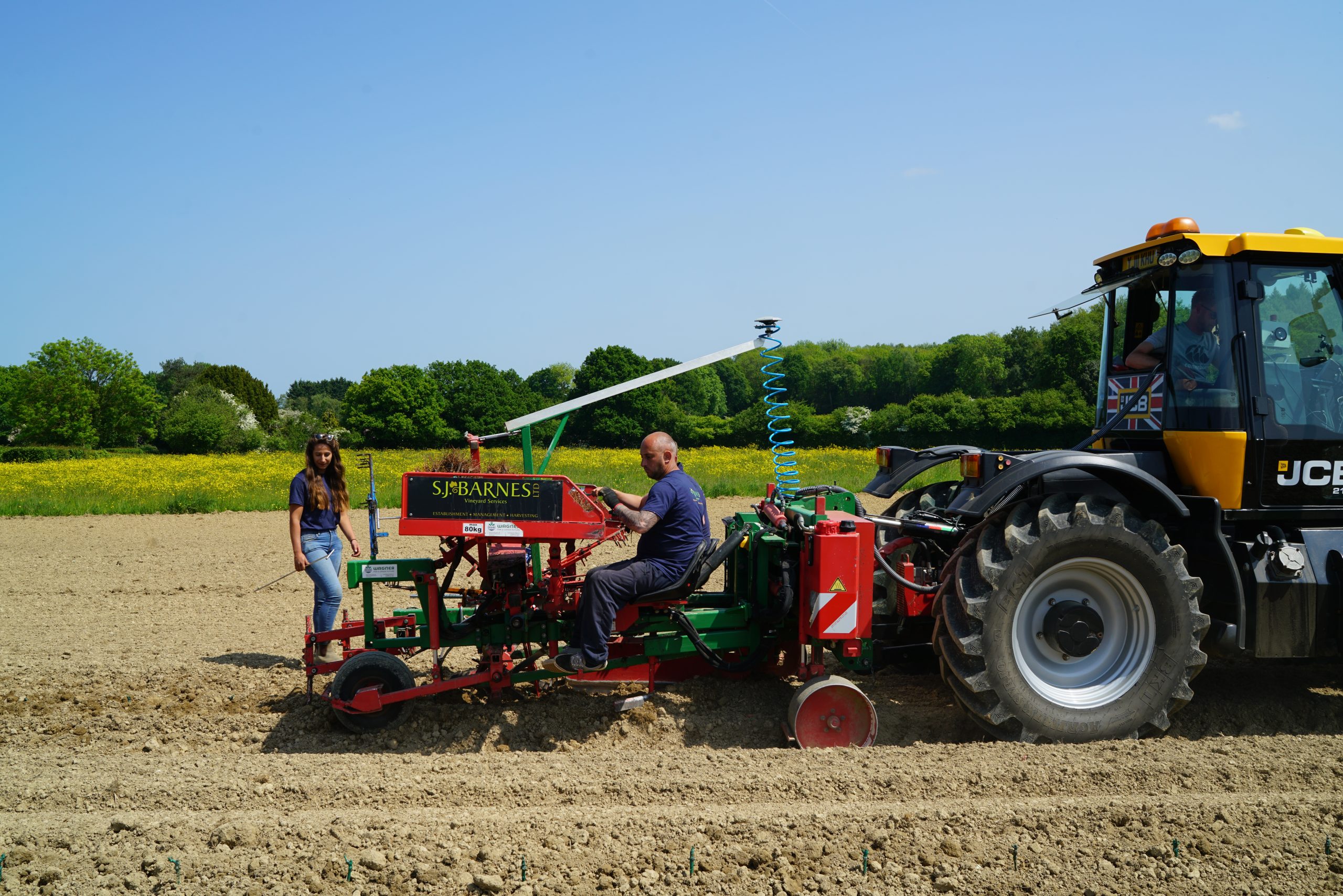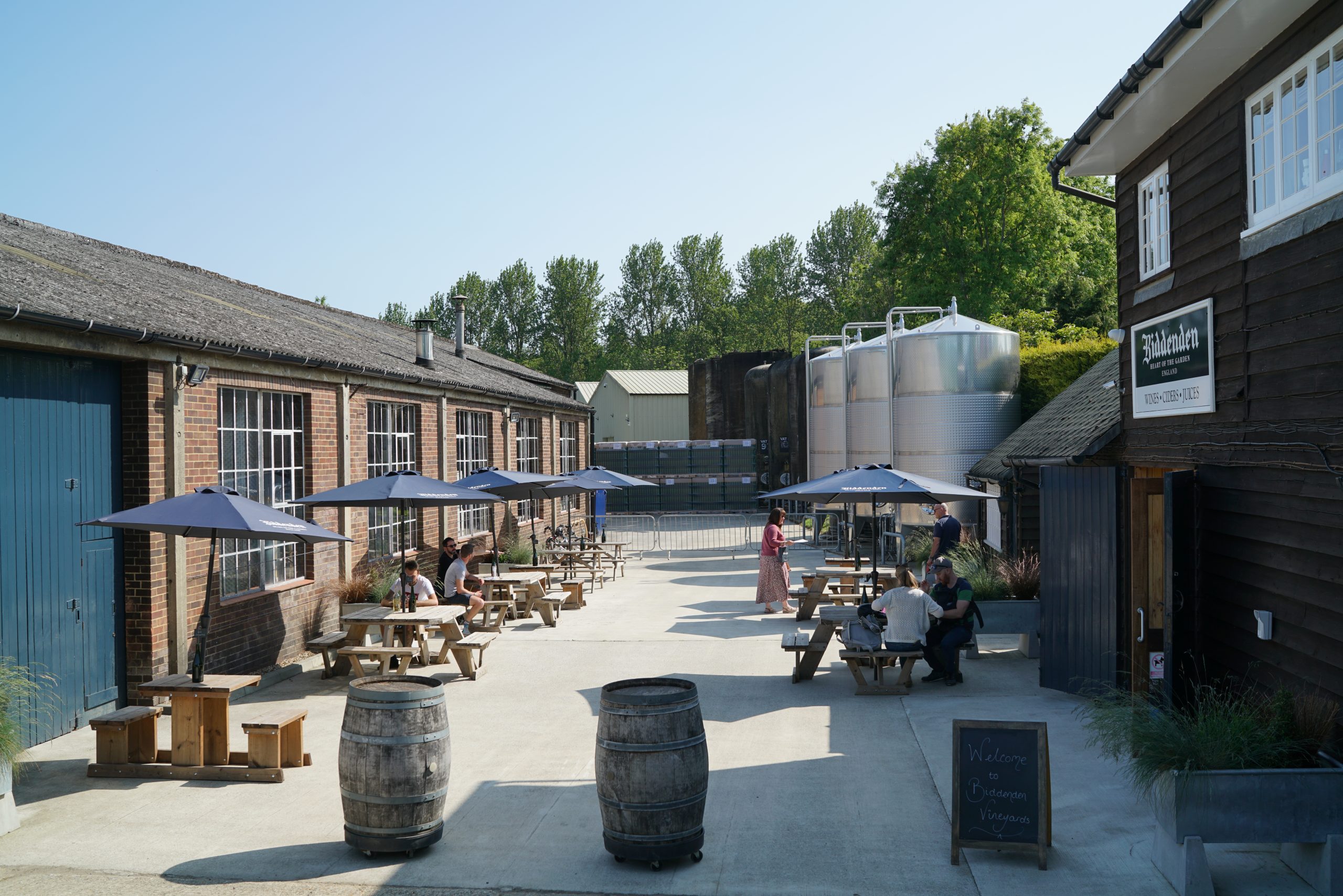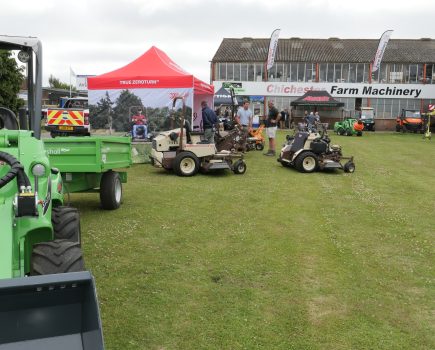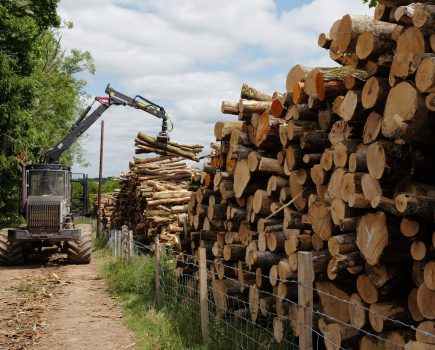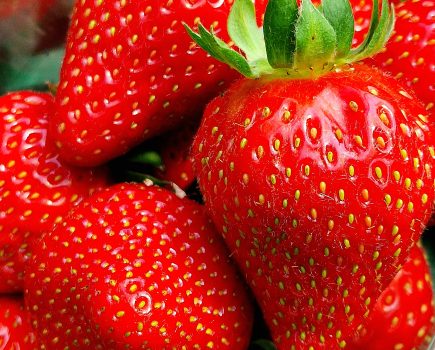This month Nigel Akehurst visits Biddenden Vineyards in Kent to take part in a planting day hosted by owners the Barnes family, who have been growing vines and making wine on their 65-acre family farm since 1969.
Arriving at the end of a country lane just outside the picturesque Wealden village of Biddenden, I park up and make my way to a cluster of traditional farm buildings, where a group of journalists and other guests has gathered for the planting day organised by third generation vintner Tom Barnes.
With everyone supplied with a glass of Biddenden sparkling wine, Tom’s father Julian gave a short welcome speech, explaining how the family came to start a vineyard on the farm at Little Whatmans.
With the farm originally home to a 40 acre apple orchard, Julian’s parents Richard and Joyce Barnes began diversifying in the late 1960s as apple prices began to decline. After listening to a feature on the BBC’s Woman’s Hour programme about English vineyards being replanted in Hampshire, Joyce was inspired to turn to viticulture. In 1969, one third of an acre of vines was planted and Biddenden Vineyards was born.
Julian admitted: “There wasn’t an awful lot of thought process that went into it other than they grew and over the next few years we had some crops and planted some more.”
It wasn’t until they planted a trial block of vines that included the variety Ortega, which remains Biddenden’s flagship variety to this day, that things really took off. During tastings in the shop it quickly became apparent that Ortega was a hit with customers.
In addition to the vines, the family also diversified into processing fruit on the farm to make their own branded Biddenden cider and apple juice, Julian said. The business buys in apples from local growers with whom they have worked for generations and processes over a million litres every year, supplying many independent restaurants, farm shops, cafés and delis across the South East, through their retail site at Biddenden and online.
Finishing his introduction, he handed over to Tom to explain more about the plan for the afternoon; a short tour of the vineyard, followed by some vine planting (carried out by middle brother Sam Barnes on his GPS-guided tractor and planter) and then a food and wine pairing.
We were divided up into individual groups, each led by an expert guide (in my case a knowledgeable chap called Colin Coombes) to answer our questions and explain more about the different varieties during our tour.
Vineyard tour
We set off along the vineyard trail, walking past row after row of green vines. In all there are 12 different grape varieties planted across the 26 acres of gentle south facing slopes, on sandy loam over clay in a shallow sheltered valley. Together this creates the perfect conditions for Germanic and French grape varieties. Biddenden has its own microclimate, explained our guide.
Ortega, a German grape developed from crossbreeding Muller-Thurgau and Siegerrebe, is Biddenden’s signature variety and covers just over half the vineyard, explained Colin. Other varieties which go into making award-winning wines include Bacchus, Dornfelder, Gamay, Pinot Noir, Reichensteiner and Scheurebe. There are also plantings of Schönburger, Riesling, Huxelrebe and Gewürztraminer.
The family’s wines are produced using only grapes grown on the estate. They are hand picked, pressed and bottled on site to produce around 80,000 bottles every year. These include a mixture of still (white and red), sparkling and dessert wines.
Retail prices range from £14 for a bottle of Biddenden still to £30 for a bottle of sparkling, which, according to our guide, is competitive compared to other local brands. Around 65% are sold to the trade to a network of restaurants, pubs and wine shops in the UK and the remaining 35% is sold from the vineyard shop or website.
We stop to look at some Dornfelder vines, a red German grape that our guide said Julian Barnes described as “the bank manager’s grape,” on account of its prolific growth (some of the bunches can weigh as much as a kilo).
These great big berries have tough skins, which is helpful in more challenging climates, but ideally they need to be out in the sun a bit longer to soften up the tannins, he added.
Growing market
Curious to learn more about the market for English wine, I looked up a few stats online. According to a report by WineGB, the official body for wine production in the UK, there are now well over 4,000 hectares of vines in England and Wales, with predictions of that figure hitting 9,500 hectares by 2030. The three classic Champagne varieties dominate, with Bacchus (almost all for still wines) in support.
The figures show sales are keeping up with production. The split is two-thirds sparkling, one third still. In 2021, sales rose 31% over the previous year to 9.3 million bottles. Direct to consumer sales have been growing and these now account for over 50% of sales, which is important because it’s more profitable for producers. Wine tourism is becoming a big thing, too.
Despite the rapid growth, the UK is still one of the smaller wine producers in Europe and one of the largest wine importers in the world.
With traditional commodity crop prices falling and BPS being phased out, farmers are being forced to look for new business opportunities. Many with suitable land are planting vines to supply the big English wine brands, a proven business model (Champagne) that works well as it allows the farmer to focus on growing and not worry about processing, building a brand or finding a market. Crucially it provides the grower with an annual cash crop after the first few years of establishment.
Vine planting demonstration
Arriving at the freshly cultivated planting field, we gathered round the JCB tractor and planting machine. Tom explained a little bit about the three varieties they were planting that morning – Riesling, Pinot Noir and Schönburger.
He highlighted the use of a taller trellising system that is designed to provide more airflow and help reduce frost risk. At 3.2 metres wide it allows sunlight into the rows for longer periods across the day, which gives great benefits closer to harvest by allowing the fruit to dry quicker in the mornings with the aim of longer ‘hangtime’ for still wine making.
It also gives the business the option of mechanical harvesting in the future – though the plan is to continue picking by hand unless labour becomes more of a problem. “We need to keep our options open,” Tom said.
Tom handed over to his middle brother Sam, who runs his own vineyard contracting business S J Barnes Ltd, which he started in 2018. He and his team specialise in establishment, management and mechanical harvesting only, and on average they import and plant about half a million vines across the UK each year.
They were two thirds of their way through their planting tour, he said, which had included Norfolk, Essex, Bedfordshire, Hertfordshire, Oxfordshire, The Cotswolds, Wales, Cornwall, Devon, Dorset and Sussex. The following week they were off to the Isle of Wight for a day and then several days in Hampshire.
Holding out a vine, he explained that nearly 90% of it is rootstock and just the top part of it is the variety. The company imports vines from two nurseries in Europe (one in Germany and one in France).
Sam pointed out that the rootstock is resistant to phylloxera (a nematode in the soil that can be detrimental to the plant health), and the variety is grafted on the top and chosen to suit soil type and vigour.
Adding some technical context, he explained: “If you’re planting on sandy loam over clay, we’re using an S04, if you’re on the North Kent downs chalk you plant on FERCAL or 41B – something that’s got a high tolerance to high active calcium.
“It is also possible to use a restrictive rootstock, if you’re on strong ground, to reduce yield and improve quality and swap that around,” he added.
Continuing, he said: “This vine is nearly 18 months old and we’ll plant it with GPS – the tractor is fully automated – meaning it will drive itself,” (though still requires a driver in the cab for safety).
“The planter on the back is controlled by a separate network from a sim card and it plots from an A and B point taken from the last row to perfectly match the row width and vine spacing (within 2cm).”
Sam explained this was the first time (apart from his trial rows) that they had used GPS planting at Biddenden. “Everything else you’ve seen today is planted by hand,” he said.
A member of the audience asked how many vines they could plant in one day. Sam replied that the limit was around 25,000 on a good day – about five hectares or 12 acres.
“Planting costs £30,000 to £32,000 a hectare for a green site (i.e. bare ground that has been cultivated ready for planting) including planting costs, trellising installation and all the materials,” Sam said.
It’s a significant investment and a decision that requires careful consideration, advised Julian when I got chatting to him later in the day. He said it was important to figure out your market and then work backwards. He also warned that labour is becoming difficult to find, another reason why future proofing trellising for mechanical harvesting is good idea.
Tasting and food pairing
We then moved on to a marquee for the final part of the day – the tasting and food pairing. For the food and wine pairing Tom was joined by Steve Parker, a cheese and wine expert (and author of the book Cheese on Toast).
We tasted some delicious wines including their recently released Gamay Noir from the 2022 vintage, a wine that has only been made six times since the vineyards were planted back in the 1960s. It requires the perfect weather and luckily 2022 was just that. The wines were accompanied by some excellent Kent crisps, local charcuterie from Moons Green and cheese from Hinxden Dairy.
The future
Chatting to family members over the course of the event, I was struck by their passion and enthusiasm for what they do. With over 50 years of experience, they have been at the vanguard of a movement that is going from strength to strength.
“It’s not a job, it’s a lifestyle,” said Tom, adding that you need to be fully immersed to achieve your goals, as nothing in agriculture is a given.
Starting a vineyard is a long-term commitment, but as Tom said, it really is a great thing to take a crop from a field, create a wine and talk to your customers about that journey.
UK consumers are also prepared to pay a premium for English wine, meaning there is a greater profit margin than with many other food staples. The icing on the cake, of course, is tourism and direct sales. With the rise of staycations, the weak pound and the warmer climate attracting more foreign tourists, those upfront planting costs don’t seem so bad.

